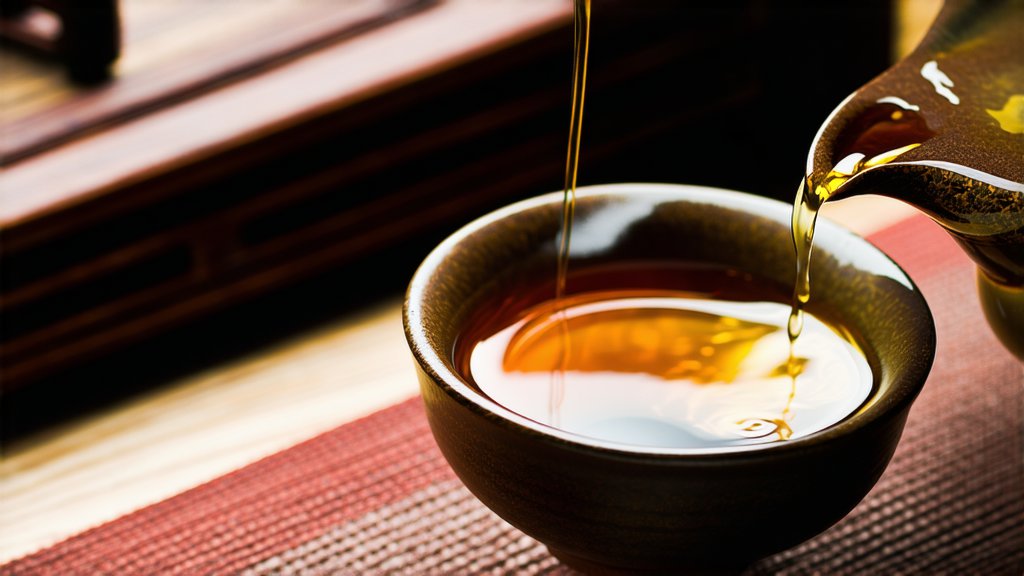
Pu'er tea, a distinguished member of the dark tea family, holds a revered place in the annals of Chinese tea culture. Its origins trace back to the Yunnan Province, a region renowned for its rich biodiversity and ideal climatic conditions for tea cultivation. This unique tea has not only withstood the test of time but has also evolved, captivating tea enthusiasts worldwide with its depth and complexity. In this article, we delve into the historical background, varieties, production processes, and the art of appreciating Pu'er tea.
Historical Background
The history of Pu'er tea is steeped in ancient tradition and folklore. It is said that the tea was first produced during the Tang Dynasty (618-907 AD), though it gained prominence during the Song Dynasty (960-1279 AD). The name "Pu'er" is derived from the market town of Pu'er in Yunnan, where tea traders would congregate to trade their wares. Over centuries, Pu'er tea became a symbol of cultural exchange, traveling along the Tea Horse Road to Tibet and other parts of Asia.
Varieties of Pu'er Tea
Pu'er tea is broadly categorized into two types: Sheng (raw) Pu'er and Shou (ripe) Pu'er. Each type has its own distinct characteristics and aging process.
-
Sheng (Raw) Pu'er: This variety is made from sun-dried green tea leaves and undergoes natural fermentation over time. The aging process can span several years, during which the tea develops a complex flavor profile and deepens in color. Sheng Pu'er is prized for its potential to improve with age, much like fine wine.
-
Shou (Ripe) Pu'er: This type undergoes a process known as "wet piling" or "wo dui," where the tea leaves are piled together and left to ferment in a humid environment for several months. This accelerates the aging process, resulting in a mellower taste and a darker color compared to Sheng Pu'er. Shou Pu'er is often enjoyed for its immediate drinking qualities without the need for extensive aging.
Production Process
The production of Pu'er tea is an intricate process that involves several stages:
-
Plucking: High-quality tea leaves are handpicked, usually from old-growth tea trees known as "gushu."
-
Withering: The freshly plucked leaves are spread out to wilt under the sun, reducing moisture content and preparing them for further processing.
-
Fixation: The leaves are then briefly heated to halt oxidation, preserving their green color.
-
Rolling: The leaves are rolled to release juices and shape the tea.
-
Drying: The rolled leaves are dried to remove any remaining moisture.
For Sheng Pu'er, the leaves are then aged naturally, while Shou Pu'er undergoes the wet piling process before aging.
The Art of Appreciating Pu'er Tea
Appreciating Pu'er tea is an experience that engages all the senses. Here are some steps to savor this exquisite tea:
-
Preparation: Use a Yixing clay teapot or a Gaiwan for brewing, as these materials enhance the tea's aroma and flavor. Rinse the tea leaves briefly with hot water to awaken them.
-
Brewing: For Sheng Pu'er, use water at around 90-95°C (194-203°F), while Shou Pu'er can be brewed with slightly cooler water, around 85-90°C (185-194°F). Steep the tea for about 10-20 seconds for the initial infusion, gradually increasing the steeping time for subsequent infusions.
-
Aroma and Taste: Inhale the fragrant aroma rising from the teapot or cup. Take small sips, allowing the tea to coat your palate and savor its evolving flavors. Note the texture, body, and aftertaste.
-
Observation: Examine the tea leaves after brewing; Sheng Pu'er leaves will appear more vibrant and flexible, while Shou Pu'er leaves will be darker and more brittle.
-
Reflection: Reflect on the tea's journey from leaf to cup, considering its historical significance and the craftsmanship involved in its production.
Health Benefits
Pu'er tea is not only a delight for the senses but also offers numerous health benefits. Rich in antioxidants, polyphenols, it helps combat free radicals and supports overall well-being. Studies suggest that regular consumption of Pu'er tea may aid in weight management, improve cardiovascular health, and promote digestive health due to its probiotic properties. Additionally, its caffeine content provides a gentle boost without the jitteriness associated with coffee.
In conclusion, Pu'er tea embodies the essence of Chinese tea culture—a harmonious blend of tradition, innovation, and nature's bounty. Whether you are a seasoned tea connoisseur or a curious novice, exploring Pu'er tea offers a profound journey into the world of tea, enriching both mind and body. As you sip this ancient elixir, allow yourself to be transported through time and space, connecting with centuries of tea heritage and the enduring spirit of Pu'er.